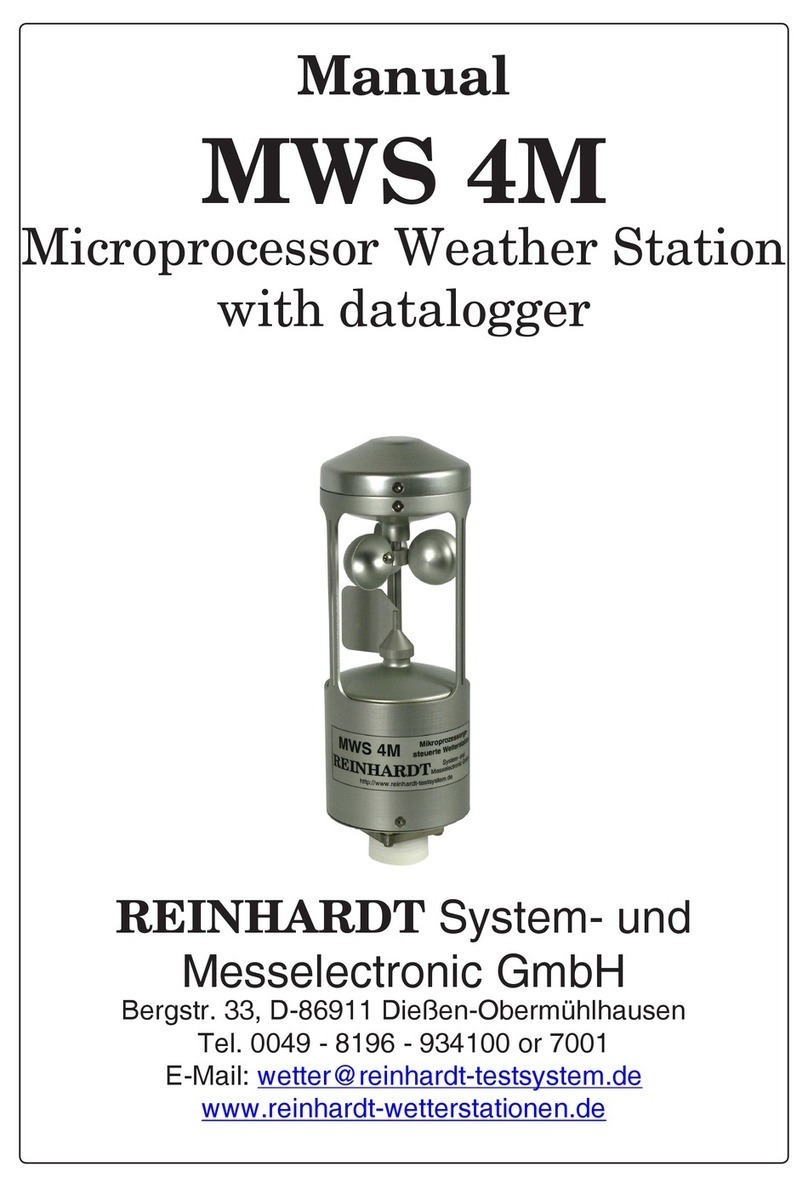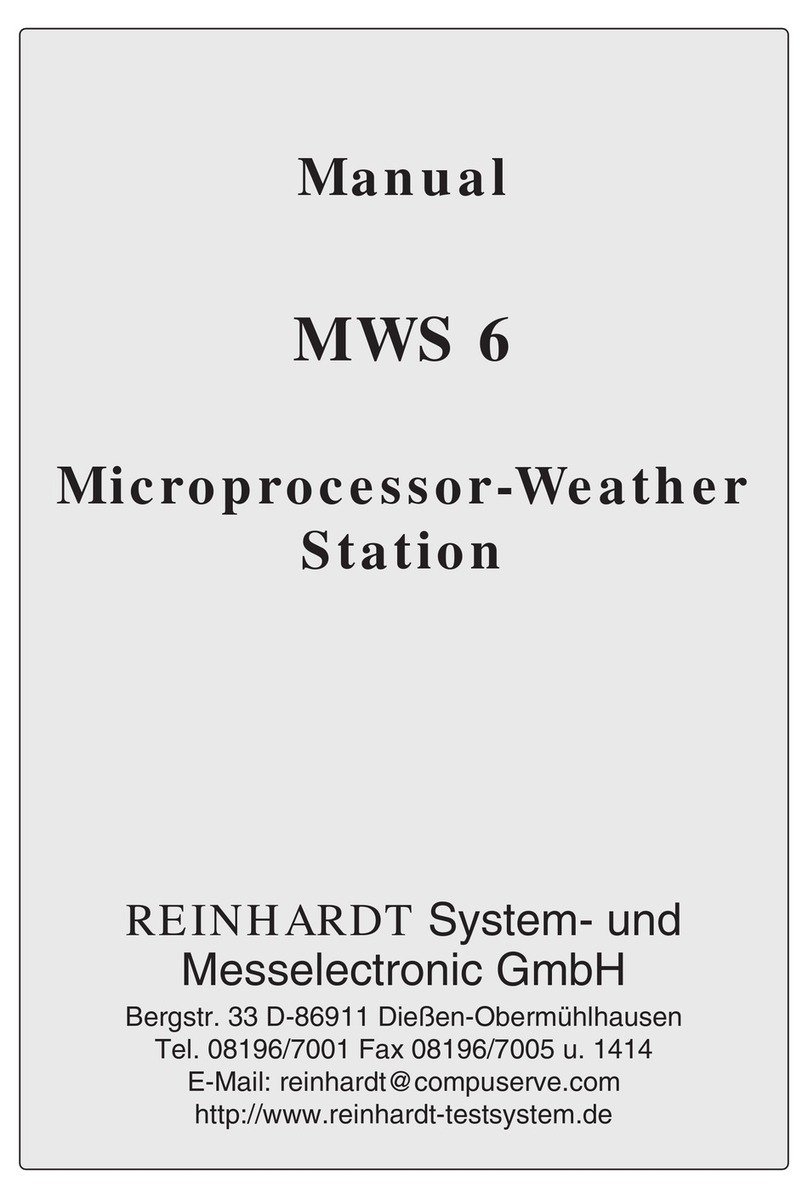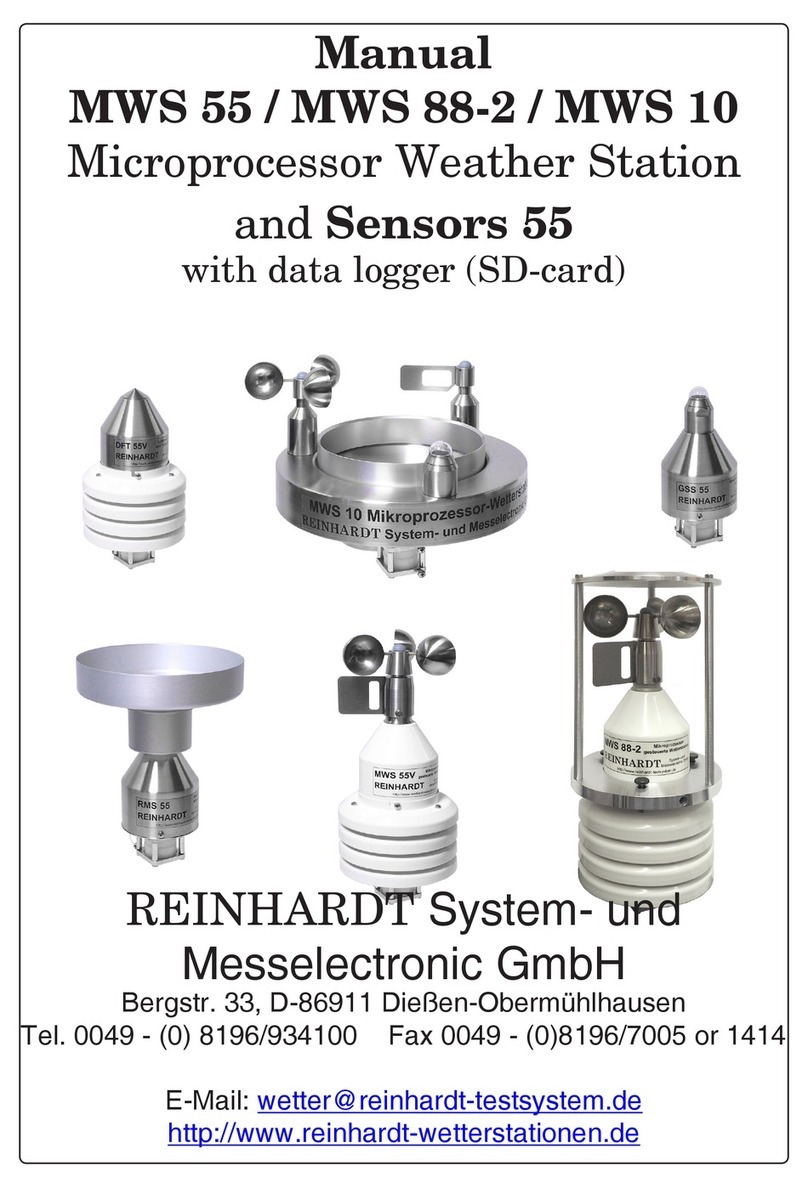
MWS 9-5e.p65 Page 10
MWS 9-5 Manual
erstellt am 30.05.2012 von DO
REINHARDT System- und Messelectronic GmbH
Fax:
08196/7005
and
1414
email:
[email protected] Web: www.reinhardt-wetterstationen.de3 Technical details
The standard datalogger of MWS 9-5 can store data of about 26 days, 6 hours and 5 minutes (7561
data records). These specifications refer to a memory interval of 5 minutes and the 13 sensors set
by default. Shorter memory intervals and more sensors reduce the period of time which is covered
with the datalogger, larger intervals and less sensors extend it.
The small Excel-file \Software\MWS 5M - Speicherkapazität\Speicher MWS 5M.xls on the Wea-
therCD helps you to find out the exact memory which is required.
3.1 In Case of Power Failure
The datalogger of MWS 9-5 is made up of EEPROMS which preserve the data even after a power
failure. In case of power failure, MWS 9-5 keeps on running as usual for up to 15 minutes and
storing data in its datalogger because of the in-built backup batteries (3x NiMH). If additional
sensors are connected, they reduce this run time because more power is required. A connected
GPS-receiver and the heating do not run on if the power supply fails. For an operation in case of
power failure it is necessary that the POWER / Data connector of MWS 9-5 remains plugged-in.
NOTE
If the power failure takes too long and the backup batteries are discharged, MWS 9-5 loses the time
and data are only stored into the datalogger, after the clock is reset when power has returned or if
a GPS-receiver sets the clock automatically.
If you unplug the MWS 9-5 power connector, the clock is deleted.
When power returns, the internal backup batteries are recharged within a few hours.
NOTE
It the MWS 9-5 power connector is unplugged, the microprocessor interpretes this as an irregular
abortion!!
MWS 9-5 then loses the time and only stores data into the datalogger after the clock is reset.
If the Power Supply is unplugged and the POWER / Data connector is plugged-in, MWS 9-5 behaves
as if there were a power failure and, because of the backup batteries, keeps on running as usual for
up to 15 minutes. It is therefore possible to e.g. move or transport MWS 9-5 without losing data or
without interrupting the recording, if this takes only a short time.
Missing data are indicated by measure values of -99999 in the datafile. The software then reco-
gnizes in the values of -99999 that data are missing and creates a gap in the graphical displays.
You may also set MWS 9-5 in such a way that it writes into the datalogger in the set memory in-
terval as soon as operating voltage is applied. Then the datalogger contains data with the wrong
time and cannot be read out by the delivered software. You will need your own application then !
3.2 Maintenance
Because of its elaborated sensors, MWS 9-5 almost needs no maintenance. The dripping hole of
the rain collector may be clogged by insects, leaves etc. In this case, the display of rain remains
unchanged even if it is raining. You just have to carefully clean the rain collector.
The display of rain may also stop if the the rain bucket is stuck by insects below the funnel. Lo-
sen the three silicone drops that fix the funnel on the station and carefully remove the funnel.
Remove spider webs etc. from the rain bucket then. Check the mobility of the bucket and then
re-fix the funnel with three drops of silicone.
Also the windsensors may get jammed by insects or dirt.
So please mount the weather station easy to access in need of maintenance!
In any case do not open the housing. Otherwise, delicate components inside the weather station
might be destroyed.
NOTE
Our warranty ends if there is any intervention into hardware or software from your side.































